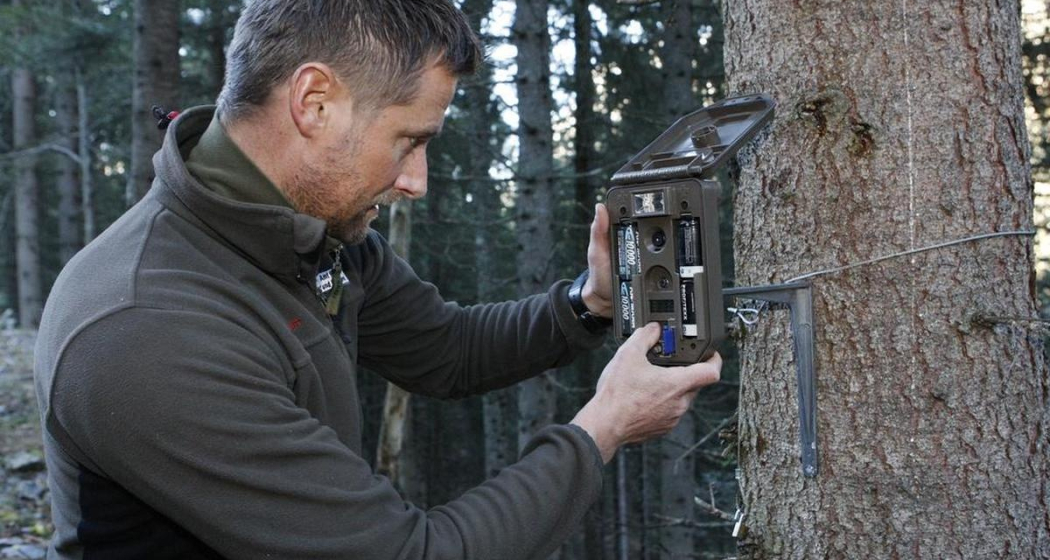Fauna Churer Rheintal
Wolves in the Tamina Valley


Show all 5 images

Description
Extinct at the end of the 19th century, the wolf has been protected in Switzerland since 1982 and has been migrating to Switzerland from France and Italy since 1995 and is also spreading naturally again in the Glarus region.
Food supply and habitat
Thanks to the forest area, which is now 30% again in the canton of Glarus, as well as the high population of red deer and roe deer, the wolf finds refuge here as well as sufficient food.
The wolves that have immigrated to Switzerland are now reproducing. They live in territories from which young animals migrate at the age of 2 years to form their own packs.
A pair of wolves was also able to reproduce at Calanda for the first time in 2012. This created the first wolf pack in Switzerland in around 150 years, which became known as the Calanda pack. It used a grazing area around the Calanda, which also included the Tamina Valley and in the west at times reached as far as Flims.
The development of wolf packs
The pair reproduced annually from 2012 to 2018. At least five puppies were born in 2018. The two parent wolves were last seen in January 2020. By then, they had already reached an age above average for wild wolves. It is unclear whether the pack and its territory were taken over by a juvenile.
The majority of the young animals born have migrated and left the pack. It is assumed that a new pack formation immediately west of the Calanda south of the Ringelspitz in the Surselva. The appearance of the Calanda pack in the Weisstannental in autumn 2018 indicates the shift of territorial boundaries and thus the formation of a new pack. This pack, descended from the Calanda pack, is known as the Stagas pack settled in the Surselva.
You can find more information about wolf packs in Switzerland at https://www.gruppe-wolf.ch/Rudel.htm
Living together with wolves
The presence of the wolf strengthens the populations of native species, as e.g. the fitness of its prey populations improves when sick or weak animals fall victim to the wolf. In addition, deer and roe deer are better distributed in the forests and chamois retreat from the forest into steep rock faces. Both have a positive effect on our protection forests, as there is less damage to the trees.
Wolves avoid humans and pose no danger to us. To keep it that way, we must not lure them into our villages with food. Livestock farmers need to protect their animals against wolves again, which is especially true for flocks of sheep. For this reason, livestock guard dogs are once again being used on many sheep alps.
Wolf stories at the Kunkelspass
The Kunkelspass is known for its wolves, as individual animals or even entire packs have been spotted here several times.
The Überuf mountain inn on the Kunkelspass invites you to linger and is surrounded by celebrities: right in front of your nose, the Calanda with its wolves towers and the Ringelspitz invites you to climb. From Kunkelspass, countless hiking trails lead through the UNESCO World Heritage Tectonic Arena Sardona, with the chance to discover the tracks of the local wolves on your own!
Directions
Public Transport
From Bad Ragaz the Postbus runs every hour to Vättis. From there it is 2 hours hiking time to the Kunkelspass.
From the train station Reichenau-Tamins you walk a good 2 hours. This can be reached by train from all directions (Chur, Thusis and Ilanz). With the post bus you can continue to the village square.
Timetable: www.sbb.ch
Directions
Tamins
From Tamins you can reach the plateau of Kunkelspass by car in about 10 minutes. For the road you need a driving license: Available from the municipality or also by SMS / app, there are instructions at the beginning of the driving ban near the workshop. A day trip costs you 20,--, motorcycles half and vehicles over 3.5 t twice as much.
Vättis
From Bad Ragaz or Landquart to Vättis. Then follow the road in the direction of Kunkels. Also from this side you need a driving license:
Can be solved via SMS or app. At the Langwies car park you will find instructions for this
Contact
Wolves in the Tamina Valley
Kunkelspass, 7015 Tamins
Responsible for this content UNESCO-Welterbe Tektonikarena Sardona.
This content has been translated automatically.

This website uses technology and content from the Outdooractive platform.